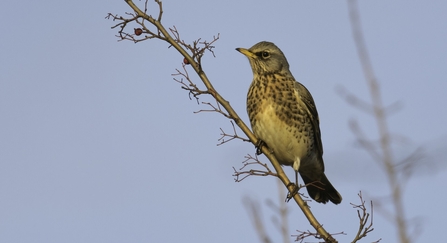In 2018 and 2019 I carried out bird surveys of Coombe Bissett Down for the Wiltshire Wildlife Trust. Alas the third year of the planned survey in 2020 was cancelled due to Covid restrictions.
In both years I carried out two sorts of surveys:
Firstly, breeding bird surveys. This involved four visits of between five and six hours each carried out between April and June. This involved walking the whole reserve and plotting on a plan the location of all birds seen or heard. At the end of the season, the data from all visits is collated, and a plan for each individual breeding species is created showing the location in which they were recorded over all four visits. This methodology is known as territory mapping and seeks to provide a best estimate of the numbers of pairs of each species breeding on the reserve.
Secondly, winter bird surveys. This involved carrying out a survey of about four hours each in November and December of each year. It is a simple count of the numbers of birds seen and heard on the reserve together with some overflying the reserve.


